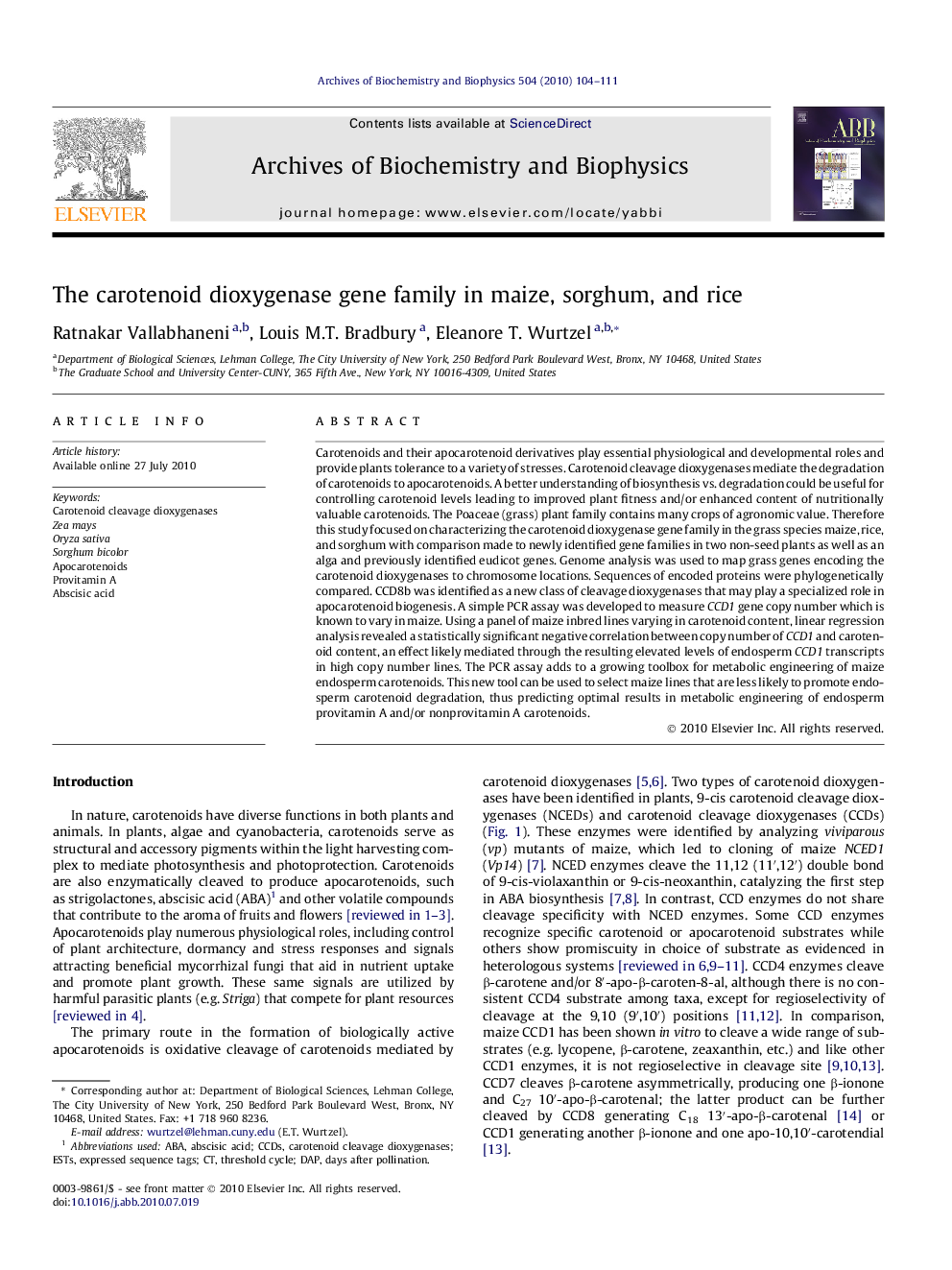| Article ID | Journal | Published Year | Pages | File Type |
|---|---|---|---|---|
| 1925878 | Archives of Biochemistry and Biophysics | 2010 | 8 Pages |
Carotenoids and their apocarotenoid derivatives play essential physiological and developmental roles and provide plants tolerance to a variety of stresses. Carotenoid cleavage dioxygenases mediate the degradation of carotenoids to apocarotenoids. A better understanding of biosynthesis vs. degradation could be useful for controlling carotenoid levels leading to improved plant fitness and/or enhanced content of nutritionally valuable carotenoids. The Poaceae (grass) plant family contains many crops of agronomic value. Therefore this study focused on characterizing the carotenoid dioxygenase gene family in the grass species maize, rice, and sorghum with comparison made to newly identified gene families in two non-seed plants as well as an alga and previously identified eudicot genes. Genome analysis was used to map grass genes encoding the carotenoid dioxygenases to chromosome locations. Sequences of encoded proteins were phylogenetically compared. CCD8b was identified as a new class of cleavage dioxygenases that may play a specialized role in apocarotenoid biogenesis. A simple PCR assay was developed to measure CCD1 gene copy number which is known to vary in maize. Using a panel of maize inbred lines varying in carotenoid content, linear regression analysis revealed a statistically significant negative correlation between copy number of CCD1 and carotenoid content, an effect likely mediated through the resulting elevated levels of endosperm CCD1 transcripts in high copy number lines. The PCR assay adds to a growing toolbox for metabolic engineering of maize endosperm carotenoids. This new tool can be used to select maize lines that are less likely to promote endosperm carotenoid degradation, thus predicting optimal results in metabolic engineering of endosperm provitamin A and/or nonprovitamin A carotenoids.
Research highlights► Carotenoid dioxygenase genes in the Poaceae were phylogenetically compared and paralogs located to chromosomes of maize, sorghum, and rice. ► CCD8b represents a new class of cleavage dioxygenases in grasses that may play a specialized role in apocarotenoid biogenesis. ► Seed carotenoid content is inversely associated with CCD1 copy number in maize. ► A simple PCR assay was developed for identifying maize lines with high CCD1 gene copy number and potentially low seed carotenoid content.
